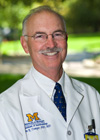Perfect Storm SurveyFaculty & Finances Survey: "The Perfect Storm Report"
From the early 1980s to 1995 medical student interest in Anesthesiology was high and the number of resident graduates increased progressively. For a variety of reasons related to "healthcare reform," interest in capitated healthcare, and an ASA workforce report there was a general consensus (especially among medical students) that there was an oversupply of anesthesiologists. This resulted in a dramatic drop in the match class of 1996. The graduating resident class of 1996 was over 1,800 while the class matching into anesthesiology was only 143! This class added non-match residents (predominately IMG applicants) to bring the class size up to approximately 800, but this was still 1,000 fewer than the classes of the previous years. Consequently, the graduating classes of the early 2000s were very small, producing an estimated national shortage of roughly 3,000 anesthesiologists. This shortage produced salary pressure noted most significantly in the academic departments. At the same time departments were being asked to provide more services at inefficient locations out of the ORs. It was clear in 1999 that many academic departments would be placed in an untenable financial situation and would require financial support from their institution (most likely the hospital) if they were going to be able recruit and retain academic faculty. Seeing this problem looming on the horizon the SAAC/AAPD council (now the SAAAPM) designated a small committee to develop a position paper describing the problems facing academic anesthesia chairs so that the chairs would have a resource when they would approach their institution for support. Otherwise it was felt that any one institution may come to the conclusion that the financial problems facing their Department of Anesthesiology was just a business/leadership problem of their department chair, and concluded that getting a new department chair could fix this problem. The committee charged with producing this White Paper determined that they would need to research the origins of the situation and provide data which would require a survey to determine the current state of the faculty and finances of the U.S. academic training programs. The survey was distributed by e-mail to all the academic chairs in the fall of 1999. The results were incorporated in a report titled, "The Perfect Storm," which was presented at the fall 2000 meeting of the Chairs. The title was taken from a recent movie of the same name and represented the confluence of several factors producing a severe financial situation facing our academic departments. It was decided at this meeting that it would be very useful to have current survey data of this type every year to provide our chairs with evidence of need during their negotiations with their institution. Hence the "Perfect Storm" follow-up surveys have been distributed every fall since 2000. Because these survey data primarily involve the faculty and finances related to running an academic department, the resulting publications (appearing in Anesthesia & Analgesia) have had Faculty & Finance in the title. We therefore now call this yearly survey the SAAAPM Faculty & Finances Survey. This yearly survey should not be confused with the SAAC Salary Survey conducted by the University of Florida. This annual salary survey was started in 1974, by Dr. Jerry Modell, to provide up-to-date academic salary data. This year’s SAAAPM Faculty & Finances survey has been sent out again in the first week of September and the results will be presented at the November meeting of the SAAAPM. For the results to be valid the response rate needs to be high so we encourage the chairs to respond. The results are e-mailed to the respondents monthly. The non- respondents are sent reminders every two weeks until December. Thank you to all the chairs who have contributed to this useful report by responding to the surveys. |


 Kevin K. Tremper, PhD, MD
Kevin K. Tremper, PhD, MD